black lives matter
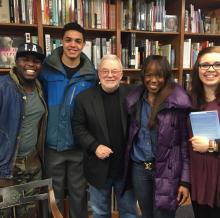
When I began writing my latest book, America’s Original Sin: Racism, White Privilege, and the Bridge to a New America, my hope was to help foster that new conversation on race in America — and to point to the action that needs to come from it. Because only when we openly and truthfully speak to the roots of racism and inequality in our country — white supremacy, white privilege, and the dehumanization and devaluation of black lives and bodies — will we able to deal with the modern-day realities of that legacy and solve the obvious problems before us in racialized policing and the blatant racial disparities in our criminal justice, education, and economic systems. So we launched a “town meeting” tour that creates space for the voices of diverse local leaders in each city and allows for the multiracial, truth-telling conversations and actions we so urgently need across this country. I’m happy to say that tour has started, and it has been powerful to see and hear.

So who was the real loser in Iowa last night? The "evangelical" brand. For weeks now the nation has heard the media talk about "evangelicals" — by which they actually mean white, highly conservative, older, mostly male voters motivated by their faith. Last night one pundit after another analyzed who this “evangelical” vote supported, with data showing Ted Cruz winning significant backing.
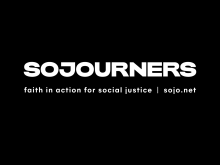
For some Christians, support for the Black Lives Matter movement is a no-brainer. After all, Jesus opposed violence, opposed the taking of life and opposed racial distinctions. As the apostle Paul taught in his letter to the Galatians, there is neither slave nor free, for “you are all one in Christ Jesus.”

A broken church: quick to condemn, fear, and divide, and slow to love, seek justice, and unify.
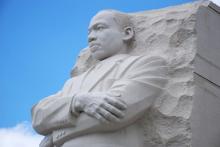
As the #BlackLivesMatter movement reminds us, the civil rights struggle is far from over. The blood, sweat, and tears of our 20th-century civil rights heroes must be followed up by the clear-eyed resolve of a new generation. Ideally, celebrations like Martin Luther King Day should help to sustain this resolve, energizing us for the hard work ahead.
That being said, I suspect that King would not be too thrilled about MLK Day.

But evangelical leaders are stepping forward. They are voicing support for the structural and systemic protection of the image of God in black people. And as in the days of MLK and Mandela, it is essential that allies understand the movement and its operating principles.
The Black Lives Matter movement is the most recent phase of the 500-year global struggle for black freedom. It is not random. It is not disorganized.

In an abrupt change, the city of Chicago has made public video footage that documents the shooting death of Cedrick Chatman at the hands of Chicago police. The 17-year-old Chatman was shot and killed while running away from police. The officers claim he turned around and pointed a black object at them, an object which turned out to be a black iPhone box.

As an Asian-American activist, I must constantly negotiate what it means to be a woman faith leader – all while challenging misconceptions of the “model minority myth” and the “otherization” of my identity in a dominant culture that often sees anything other than whiteness as foreign, exotic, or suspect. And yet, I know that my experiences do not pale in comparison to the hardships of those experienced within the greater sisterhood.
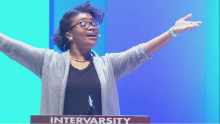
I, along with my colleagues Leroy Barber, Dominique D. Gilliard, Mae Cannon, Micky Jones, Dr. Soong-Chan Rah, and Dr. Brian Bantum, were struck that InterVarsity had made a bold and unique move among modern evangelical non-advocacy-based parachurch organizations. I served on staff with InterVarsity for 10 years from 1995-2005. For five of those years, I served as director of racial reconciliation in Greater Los Angeles. In my last year, I served as racial reconciliation specialist for Southern California. In all those years, most of the organization’s focus was on the reconciliation of cultures within their own communities. In some instances, InterVarsity even dared to address the structural and systemic injustices within its own organization. Occasionally, a campus chapter would respond to a racist incident that occurred on campus. But never before had InterVarsity issued a public statement in support of structural and systemic racial justice in the broader society.

JUSTICE-CONSCIOUS clergy and theologians have been drawn to the Black Lives Matter movement by resonating eschatological beliefs and prophetic ethics. However, movement motivations differ for many of the millennial activist leaders whose ethical sensibilities and theological worldview are not framed necessarily by doctrinal faith, ecclesiology, or trust in the church as an arbiter of God’s right and wrong.
Instead these millennial activists, unlike the boomers allied with them, relate to ethical messages found in popular cultural streams of hip-hop and spoken word that voice this generation’s pervasive questioning about theodicy—the presence of good and evil—in the world. These lyrical works articulate a generational critique of lived experiences that warrant further ethical and theological analysis. The challenge for the church and its faith leaders is: Do we listen?
In a Sojo.net post last August, I noted that the 2015 anthem chant “Hell You Talmbout,” by Janelle Monáe and Wondaland, voiced an ethical polemic on prevalent state-sanctioned practices of extrajudicial injustice. The chanted names of those killed serve to demand their remembrance as persons. As a rallying cry across the nation, the call-and-response lyrics convey a hymnody challenging the anonymity of invisibility.
Similarly, rap artist Kendrick Lamar’s 2015 song “Alright” was rapidly adopted in the Black Lives Matter movement as a counterhegemonic anthem that pushed against police violence with a first-person examination of mortality on the margins.
Lamar’s lyrical messaging in “Alright” linked cultural expression with socio-theological meaning to craft a survival ethic. Intentional use of the N-word sears the embedded consciousness of an older generation for whom the term is historically tied to the evils of slavocracy and Jim Crow segregation. However, Lamar intentionally turns to the signifying trope and demoralizing images that cast “othered” black and brown bodies into racially pejorative stereotypes. In the present millennial context, the N-word is used as a catchphrase of familiarity among peers but is also acknowledged as a pejorative used by police to identify or label black bodies—as many audio-visual recordings of incidents attest—while extrajudicial methods are physically applied. Use of repetitive lyrics in “Alright” amplifies an epistemological and ethical conundrum about systematized oppression. But do we listen?
Wouldn’t you know—we been hurt, been down before
N----, when our pride was low, lookin’ at the world like, “Where do we go?”
N----, and we hate po-po; wanna kill us dead in the street fo sho
N----, I’m at the preacher’s door
My knees gettin’ weak, and my gun might blow
But we gon’ be alright
The images in the video for “Alright” expose, with satirical irony and stark reality, that lived experiences in neighborhoods on the brink of ghettoized existence are linked to systemic control by powerful, privileged forces. Lamar’s juxtaposition of a bodily spirit in flight creates tension between the evils of oppression and a spiritual will to survive. This theoethical tension is captured when a voiced recognition of the “evils of Lucy” (Lucifer) all around is jolted into silence when a uniformed figure fires a single gunshot that sends Lamar’s black body careening off the high perch of a street light.

Influential faith leaders mourn following the decision not to indict the officer who killed Tamir Rice.
"Twelve seconds. One-fifth of a minute. Produces a lifetime of pain for a family and now eternal shame for America.”
— Rev. Dr. William Barber II, Forward Together, founder of the Moral Monday Movement, North Carolina

Black people’s humanity is still at question in the stories so many of us hear and tell in America. For many with a badge, a gun, and the legal shield of the state, black men and women — even black children — are not humans. Instead black bodies are threats and targets for rage, fear, and racially justified execution. When an officer of the law exterminates on the spot, we must ask ourselves what he was shooting. In his mind, Tamir could not have been a boy. He could not have been human. What did he see? And who bewitched him (and us) to “see things” when we are entirely sober?
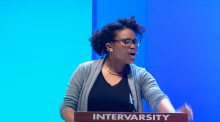
Skinner told the students at Urbana ’70 that during segregation, “the evangelical, Bible-believing, fundamental, orthodox, conservative church in this country was strangely silent.” The churches, Skinner said, supported the status quo on slavery, segregation and civil rights. During the 1950s and 1960s, evangelicals, even when they opposed segregation, stayed clear of joining the civil rights movement. This week’s support for #BlackLivesMatter is different because InterVarsity is embracing a social and political movement that is active. And it is one that is controversial both nationally and within evangelicalism.

Editor’s Note: A lot has happened this year, and there has been much to cover — much to lament, much to praise, and much to record into history. It has been our privilege and honor to write, edit, and read along with you. In no particular order, here are our 15 favorite stories of 2015.

Officer Timothy Loehmann will not face charges in the shooting death of 12-year-old Tamir Rice after a grand jury failed to indict Monday. The Cuyahoga County prosecutor’s office announced Monday that Loehmann's partner, Frank Garmback, will also face no charges. The news comes more than a year after Rice was killed while carrying a toy gun at a park in Cleveland.

Jurors began deliberations on Monday afternoon. On Tuesday afternoon, the panel informed the judge it was deadlocked, and Williams ordered them to continue deliberating.
The panel, made up of seven women and five men, resumed deliberations Wednesday morning.
In Porter's trial, the prosecution brought medical experts, policing experts and other witnesses to show that Porter was criminally negligent when he failed to secure Gray in a seat belt in the van or call for a medic when Gray requested one.
The defense brought similar experts, as well as other Baltimore police officers, to show that Porter acted as a "reasonable officer" in his interactions with Gray and that Gray's injury was the result of an accident that Porter could not have prevented.

There has so far been no official accounting of what happened to Smith the morning of Nov. 1 on the second-floor landing of the Marbury Plaza Apartments in Southeast D.C. The Medical Examiner’s report tells part of the story, but there is still so much more unknown.
"I'm no longer stating that my son was beaten to death. My son was tortured to death. There are more injuries in the coroner’s report than I could visibly see with my eyes. There were injuries on my son’s back. He was hemorrhaging — the back. The back of his head was busted,” said mother Beverly Smith.

In matters of racism and sexism, even the revolutionaries come with their own biases. The narrative of Jesus and the Canaanite woman shows us the importance of intersectionality, and careful attention that must be paid to highly marginalized people. Jesus wore the glasses of justice, but found that even he came to a situation where he needed a stronger prescription.

America stands at one side of a bridge right now as a white majority nation — on the other side, a country comprising a majority of minorities. This change is inevitable, but how our nation responds to it is currently unclear.
Are we headed for more conflict as too many in the shrinking white population try desperately to cling to the past? Or can we cross this bridge to a new America where we begin to see the "beloved community" that Dr. King envisioned?
On Jan. 19, the day after our country commemorates Dr. Martin Luther King Jr. Day, my new book, America's Original Sin: Racism, White Privilege, and the Bridge to a New America, will be released. As members of our Sojourners community and readers of my weekly column, I wanted you to be among the first to watch this preview.